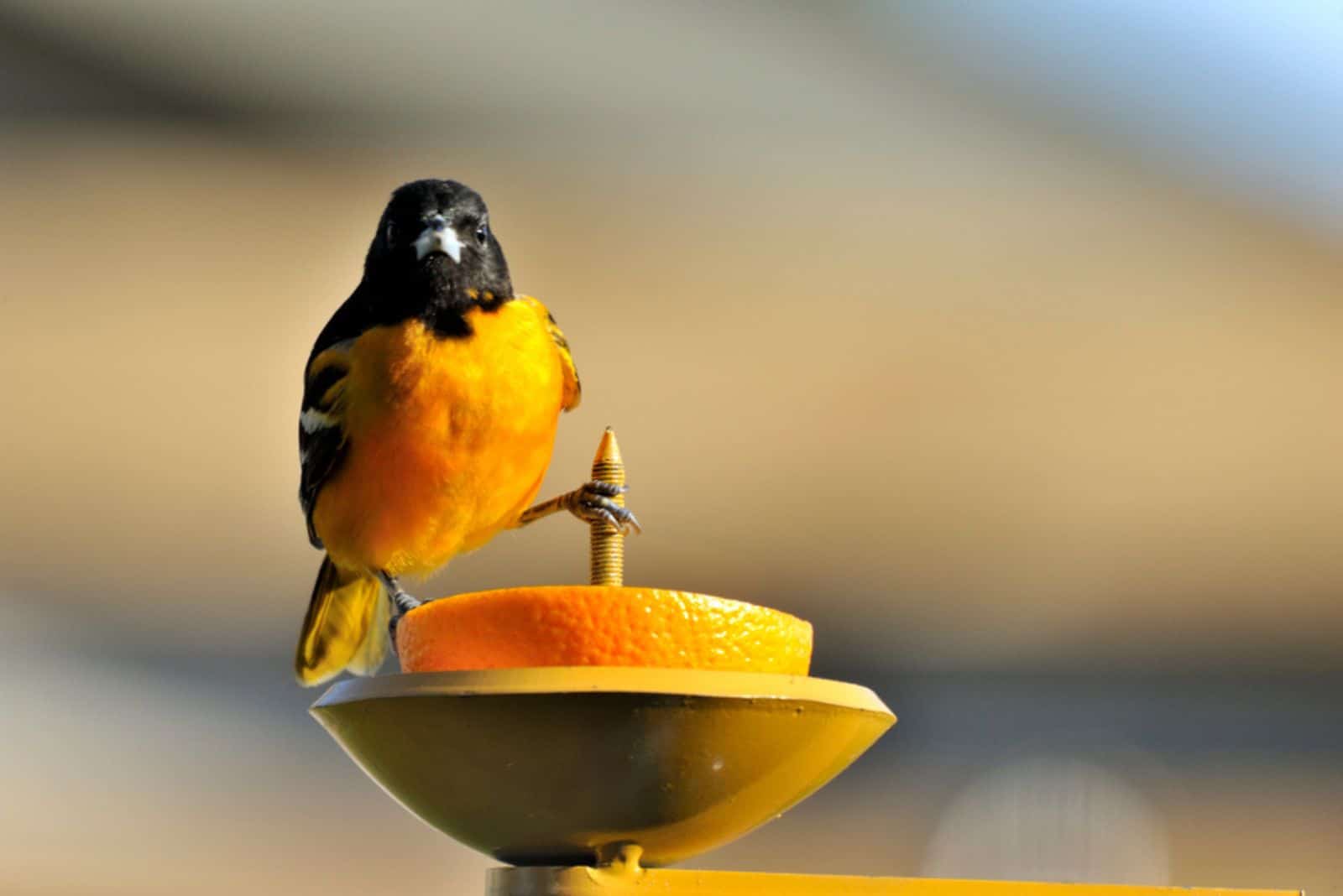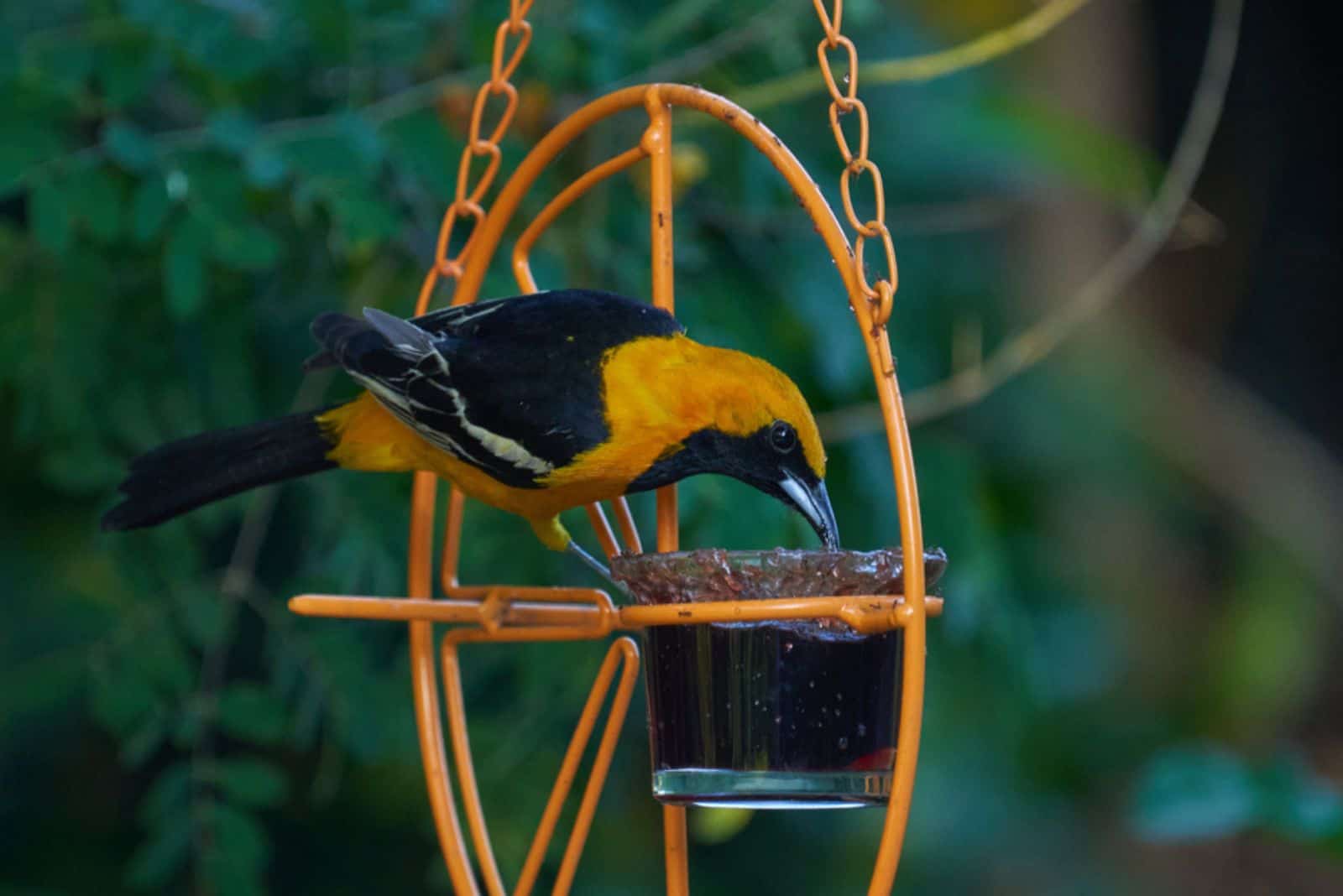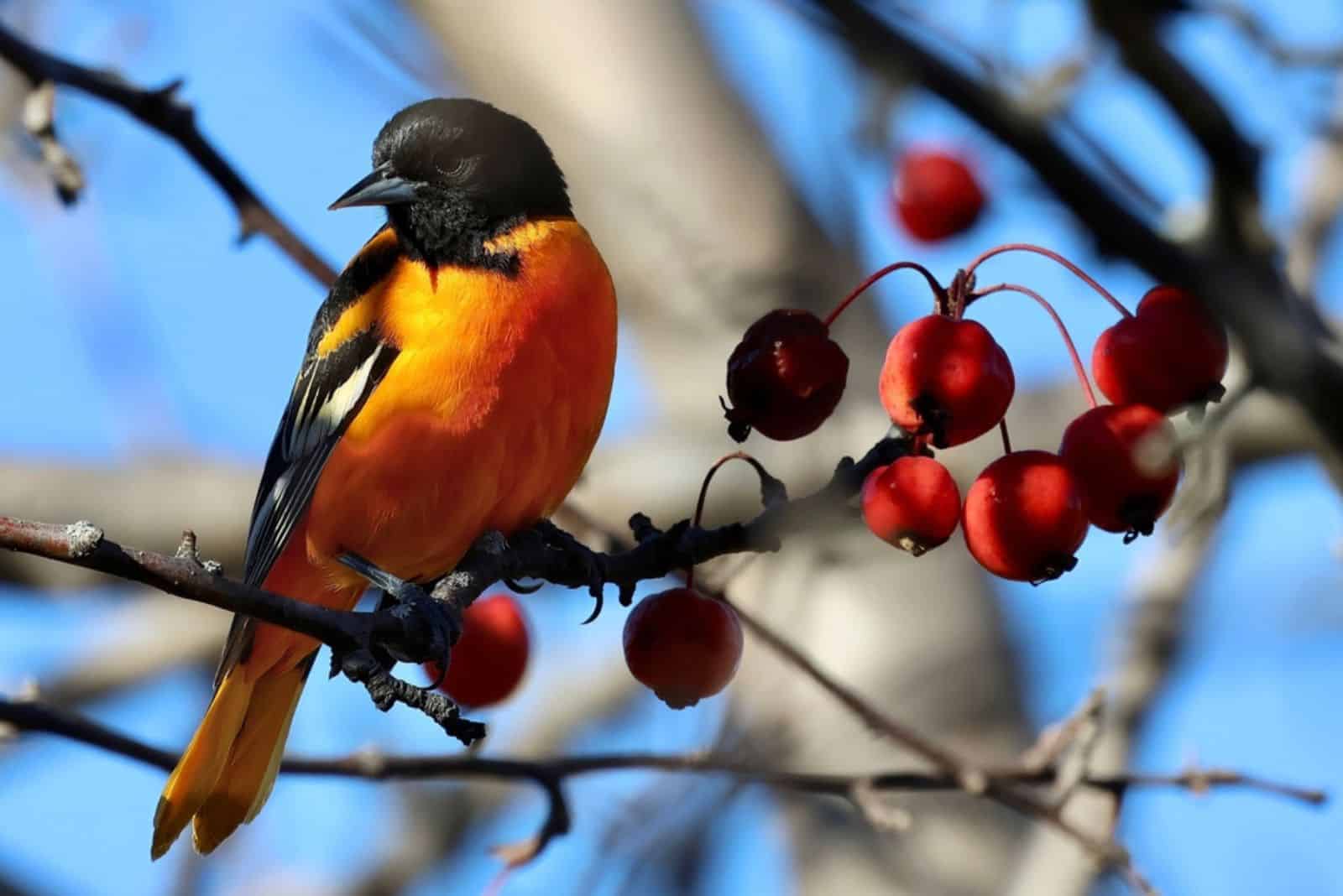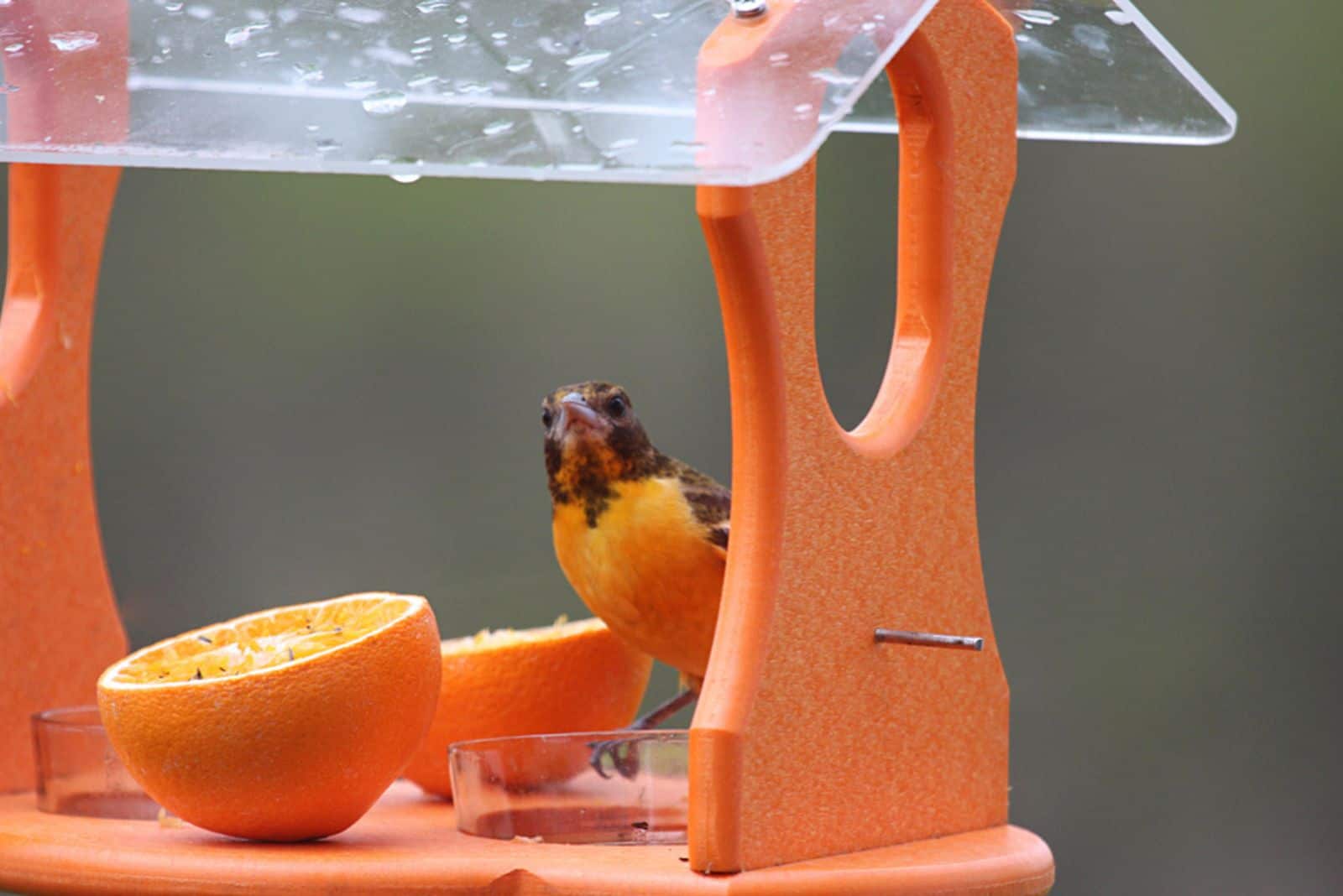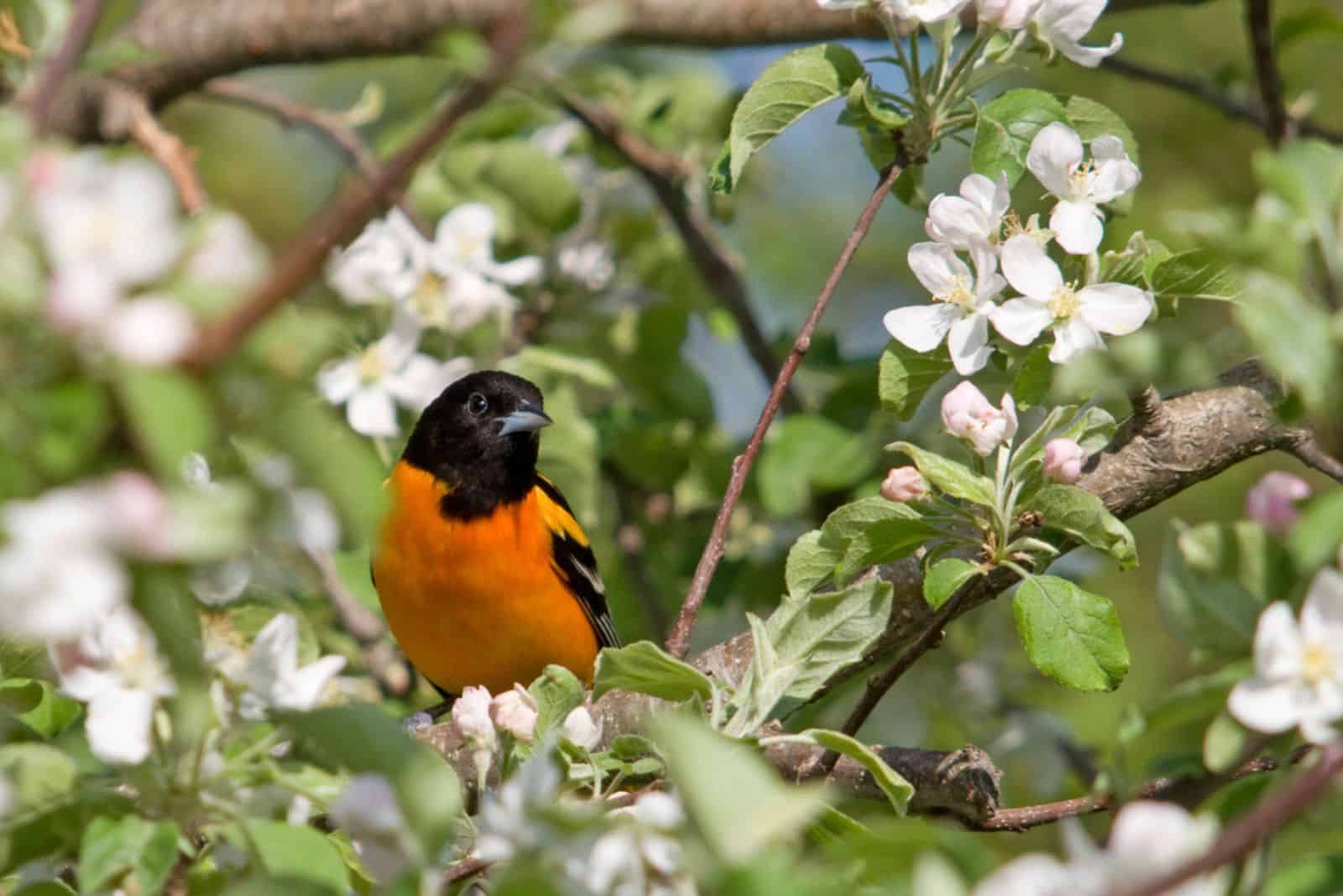Have you ever wondered what orioles eat? Unlike other birds, orioles are vibrant and cheery and have specific food requirements.
If you want to attract them into your garden and enjoy their delightful melodious songs every day, it is important to meet their needs and give them the exact food they want!
Here, we are going to cover what food these interesting birds like and the best way to attract them with the right food offerings. Let’s unlock the secrets of oriole cuisine!
Let’s Meet Orioles
Orioles are a family of colorful birds that are known for their vibrant color and cheering melodies. These birds belong to the family Oriolidae, which includes several bird species.
The most common species are the Baltimore oriole and the Orchard oriole. In this article, we are mainly focusing on the Baltimore oriole, although their food requirements are generally similar.
Most orioles typically have bright orange or yellow plumage, contrasting with black or dark brown feathers. They are great for adding a splash of color to any garden or backyard!
In addition to Baltimore and Orchard species, other orioles varieties include:
1. Audubon’s oriole
2. Hooded oriole
3. Spot-breasted oriole
4. Bullock’s oriole
5. Altamira orioles
6. Scott’s oriole
All About Feeding Orioles
In this section, we are going to cover everything you need to know about feeding orioles. We’ll start off with the food they eat, followed by instructions on how to properly feed them.
So, let’s dive in!
What Do They Eat?
Here’s what can be found on oriole’s menus:
• Worms/mealworms
• Jelly (grape or orange)
• Insects
• Wasps
• Flowers
• Buds of flowers
• Fruits (apples, berries, bananas, peaches, or oranges)
• Nectar (homemade or commercial brand)
• Suet mixed with fruits, peanut butter, or berries
Now, the food preferences may vary between different types of orioles. What’s important to note is that all orioles species eat insects, and most of them will eat berries, fruits, and nectar.
Do They Eat Insects?
Orioles’ sharp, pointed, and sturdy beaks enable them to stab and grab insects. They are even acrobatic and can catch insects mid air, but also find those hiding behind bushes and leaves.
They can eat most insects, including ones that other birds are afraid of, such as hairy caterpillars. They will attack even spiders and wasps – nothing stands in their way!
In addition to these, orioles often munch on gypsy moths, tent caterpillars, fall webworms, and also the pupae of many insects.
Even though gardeners often consider them pests since they munch on fruits as well, mostly they serve as natural insecticides!
How To Offer Insects To Orioles
You can just gather insects and display them so that orioles see them. However, there’s another way that can guarantee these birds have a delicious insect feast – start with mealworms.
Mealworms are a simple and affordable way to provide insects for orioles to eat. You can easily find them in fishing shops or pet stores.
Simply put a container of mealworms on the bird feeder. You should also add some vegetable peelings so that the mealworms have something to eat while they are waiting to be eaten. They don’t like being in the open and will quickly leave the container if left uncovered.
Don’t put too much bran or veggies in the container because they might cover the worms and prevent orioles from being able to see that there is something moving beneath!
Once they figure out the worms are there, orioles will eat them all quickly and stick around for the next course.
What About Fruits?
Yes, orioles absolutely love fruits!
They specifically adore oranges, purple figs, and berries. However, they will munch on anything sweet and juicy, especially during spring and early summer when they need energy after migratory flights.
What’s interesting is that they have an unusual way of eating fruits known as gaping. They basically stab the fruit open with their beaks and let the juices flow directly into their mouths.
Once they are nested and have to feed their younglings, orioles usually switch to insects.
How To Offer Fruits To Orioles
Even though you can just leave some fruits out there, it’s best if you slice them into bits and pieces. For instance, oranges should be sliced, halved, or quartered so that they can attach to the feeder easily.
Orioles are usually attracted to more vibrant and dark colors, which is why some folks soak apples or bananas in grape juice. You don’t have to do this with grapes, plums, or berries.
Do Orioles Like Nectar?
Yes, they absolutely do!
These vibrant birds are especially attracted to vibrant flowers. They dip their beaks into the flowers in order to get nectar. They don’t fly around like hummingbirds but they sit on a twig or a branch and dive in.
However, many insects also like nectar so they can be caught flying around the flowers – this is a win-win situation for orioles. After a main course with insects, they get to enjoy the sweet nectar dessert!
How To Offer Nectar To Orioles
You could either use a shallow dish or simply buy a nectar feeder. Make a thick syrup with a sugar-water nectar mix or use a grape jelly.
You can either mix it with water to make a syrup or use it as it comes. However, make sure that there are no artificial sweeteners, preservatives, or colorants.
Tips For Attracting Orioles
Now that we have covered what orioles eat, let’s discuss other ways to attract them. Sure, you can always offer them food, but you can also do something else to make them stay in your backyard for a long time.
Here are some tips:
• Get a bird feeder – there are special bird feeders that are specifically designed for orioles. They are usually orange and round, and they offer a place to put nectar and fruits. You can find some here.
• Grow plants – folks often grow certain types of plants in order to attract songbirds. Zinnias, Dahlias, American holly, Flowering dogwood, Mulberries, Crabapples, and Wild black cherry are just some of the examples.
• Orange color – orioles are attracted to the color orange, so you can put flags, orange ornaments, or even grow orange flowers to catch orioles’ attention.
• Avoid using insecticides – these will get rid of their favorite food.

